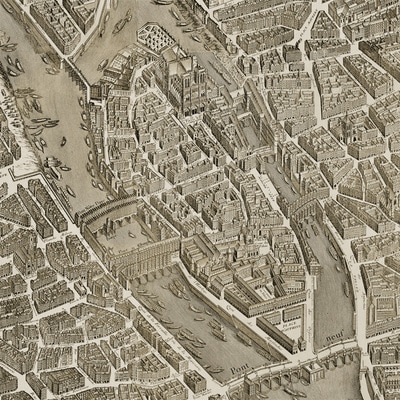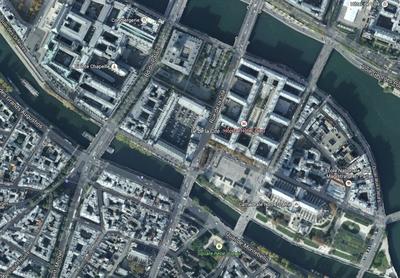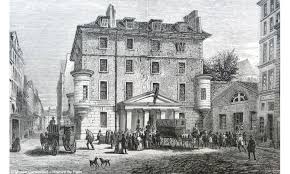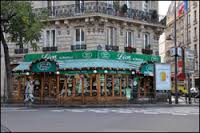 Cities don't stay still. Their shapes change. Rivers move, neighborhoods are destroyed to make way for new roads, and buildings fall down and are replaced with little or no respect for the people that once lived there, or the things they said and did. Paris underwent a great deal of change in the 19th century. In 1853, Napoleon III commissioned his prefect, Haussmann, to redesign Paris so that it would be beautiful, united and airy. The old Paris was dirty and unhealthy - there were too many people living in confined spaces, and a lot of sickness and death. But it was also easier to ferment revolt in dark and narrow streets. In June 1832 and May 1848, the streets of Paris had been the scene of much fighting, with barricades being set up in the narrow passages, piles of furniture and debris, upturned paving stones. This would no longer be possible in Haussman's wide boulevards. Haussman worked on the Rive Droite first. But his most drastic redesign was perhaps the Ile de la Cite, where the Conciergerie, the last prison of those who were executed in the Revolution, stands. Between 1859 and 1867 the Capital was transformed from a nest of narrow breeding disease and discontent, to a network of large, airy boulevards, connected by the remaining truncated streets.
The first boulevard constructed was the Rue de Rivoli, lounging the Seine river on the Rive Droite. This is by far the fasted way from the Conciergerie, on the Ile de la Cite, to the place de la Concorde, previously Place de la Revolution. In other words, had this road existed in 1793, Manon Roland and Olympe de Gouges would have had a much more comfortable journey from their prison to the guillotine. In 1870, Haussman was dismissed. The Parisians had had enough of their city being constantly turned upside down, and his projects were expensive. Nonetheless, they were continued until 1927. And seven years after Haussman's dismissal, the Boulevard St Germain was constructed. Many buildings were taken down in order to make space for this, including the prison where Manon Roland was first taken, L'Abbaye. The space where the prison building once stood is now occupied by a restaurant from a chain specialising in Belgian mussels.
0 Comments
Leave a Reply. |
About
This is where I live blog about my new book project, an intellectual biography of three French Revolutionary women philosophers. Categories
All
Archives
November 2022
|




 RSS Feed
RSS Feed